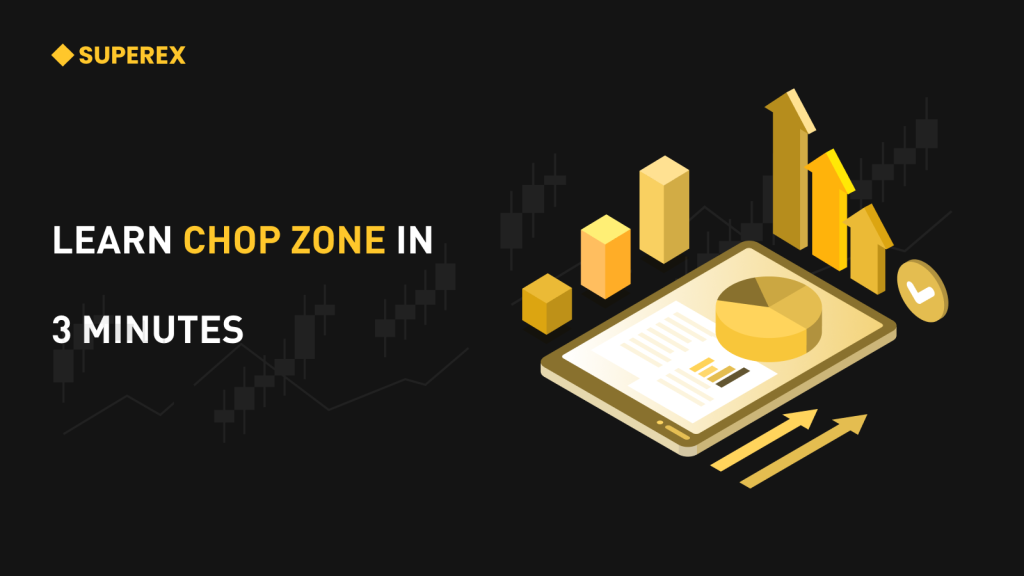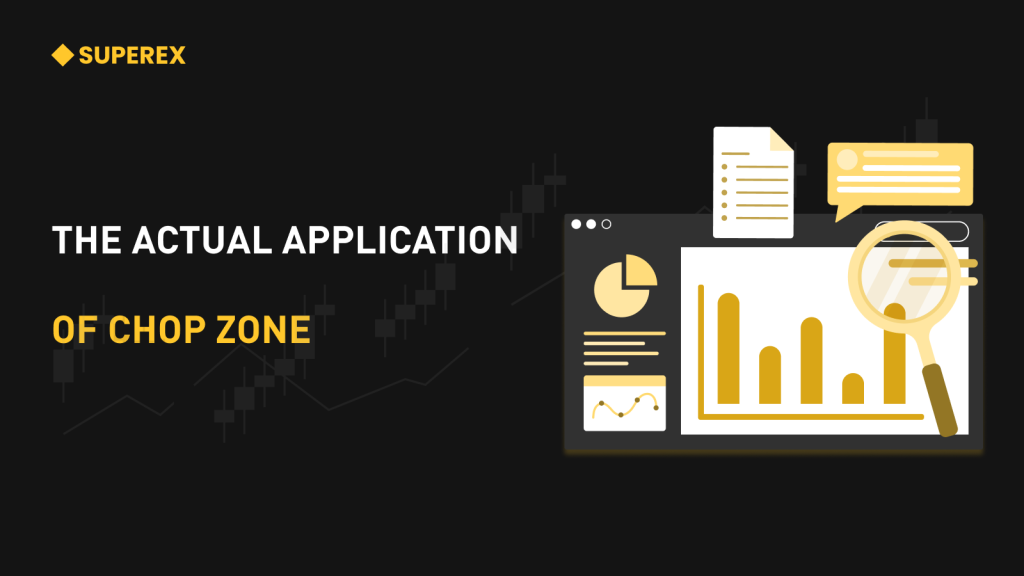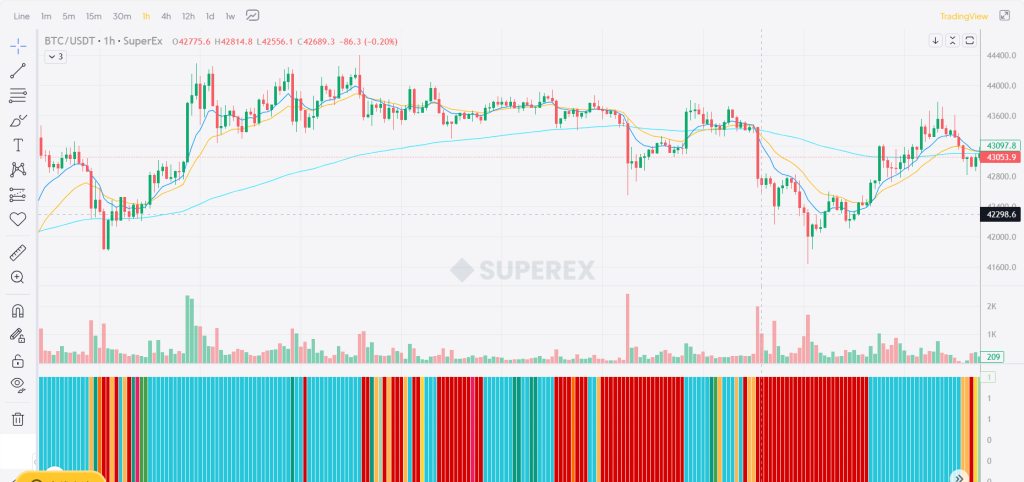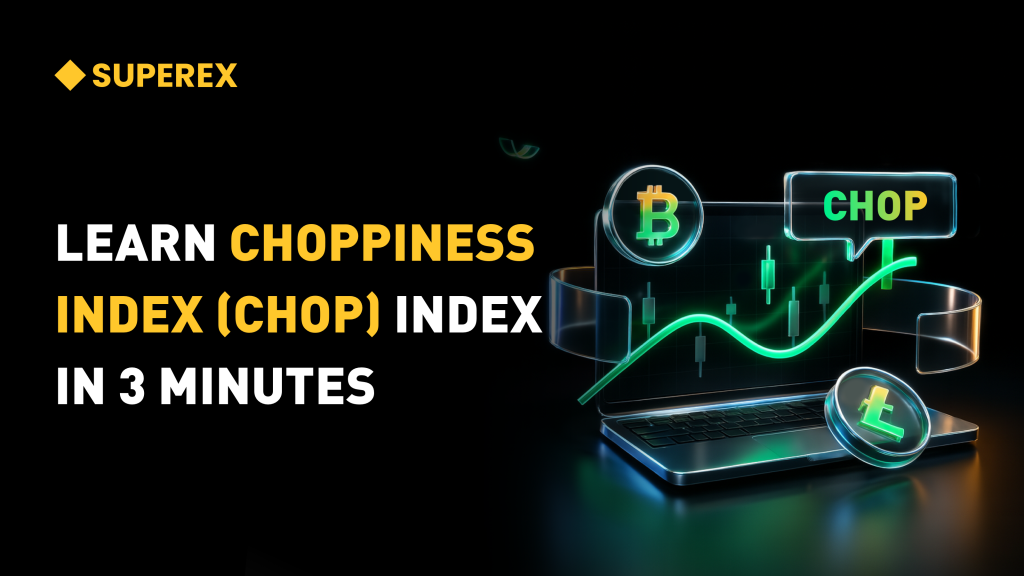LEARN CHOP ZONE IN 3 MINUTES – BLOCKCHAIN 101

Introduction
In the vast ocean of financial markets, sometimes the price fluctuations are as calm as a lake, showing no clear direction; this is the mystery of the Chop Zone. In this article, we will delve into the Chop Zone, revealing its characteristics, coping strategies, and potential value in investment decisions.

Chop Zone Overview
The Chop Zone, or oscillation zone, is a key concept in the field of technical analysis, describing periods when the market is in a state of sideways fluctuation. This scenario often resembles a “waiting area” of the market, where prices fluctuate within a certain range without a clear trend.
In the Chop Zone, price fluctuations are relatively stable, forming a kind of horizontal platform. Moving averages may cross frequently, technical indicators may show instability, and market participants seem to be waiting it out.
Historical Origin of the Chop Zone
The term Chop Zone doesn’t have a clear historical origin; it is more a concept summarized from practice in the field of technical analysis. The concept of the Chop Zone can be traced back to technical analysts’ observations and summaries of market volatility and trends.
In technical analysis, people have long been dedicated to discovering patterns and regularities in the market. As a term describing the market’s sideways fluctuation state, the Chop Zone primarily emphasizes the characteristics of the market lacking a clear trend and having relatively stable price fluctuations during a certain period.
Although the term Chop Zone might not have a specific inventor or origin story, it has been widely applied in the practice of technical analysis. By observing and summarizing market behavior, technical analysts realized that sometimes the market presents a state where prices fluctuate within a certain range without a clear trend. This observation formed the understanding of the Chop Zone, helping investors better comprehend and respond to different market states.
The concept of the Chop Zone is essentially a summary and generalization, a product of the technical analysis field’s deep understanding of market dynamics. As a term, it plays an important role in describing market characteristics and guiding trading strategies. Although it doesn’t have a specific historical origin, the Chop Zone has become one of the very useful tools for technical analysts to understand the market through observation and summary.

Characteristics of the Chop Zone
Price Stability Fluctuation: Within the Chop Zone, market prices are relatively stable, fluctuating within a relatively narrow range. This may be a manifestation of the market temporarily lacking a clear direction for some reason.
Frequent Crossing of Moving Averages: Due to the lack of trend, moving averages may frequently cross, but these crossings are often short-lived and do not form a sustained trend.
Unstable Performance of Technical Indicators: Common technical indicators may perform unstably in the Chop Zone, producing false signals. The Relative Strength Index (RSI) may fluctuate near overbought or oversold levels without providing clear trend signals.
Relatively Low Trading Volume: The trading volume in the Chop Zone is usually relatively low, reflecting the hesitation and wait-and-see attitude of market participants towards the trend direction.
Coping Strategies for the Chop Zone
Use Trend Following with Caution: In the Chop Zone, traditional trend-following strategies may not perform well. Investors might need to adjust their strategies and adopt trading methods more suited to oscillating markets.
Range Trading: Within the Chop Zone, range trading can be an effective strategy. Investors might try buying when the price approaches the support line and selling when it approaches the resistance line.
Wait for Trend Confirmation: Investors can also choose to wait and watch within the Chop Zone, waiting for the market to unfold a new trend. This can be confirmed by observing price breakouts above or below the oscillation zone’s limits.
Flexible Use of Technical Indicators: Technical indicators may need more cautious use in the Chop Zone. Investors can consider using some indicators suitable for oscillating markets, such as the oscillation ranges of the Relative Strength Index (RSI).
Practical Operation in the Chop Zone
Chart analysis of the Chop Zone (oscillation zone) mainly involves observing price trends and related indicators. Here are some common charting methods used to help determine if the market is in the Chop Zone:
Price Trend Charts: Use line charts, candlestick charts, or other types of price trend charts. Observe the fluctuation of prices on the chart, especially whether the price fluctuates within a relatively narrow range, lacking a clear trend direction.
Moving Averages: Add different periods of moving averages to the price trend chart. Observe the crossing of moving averages, especially whether they frequently cross without forming a clear trend. Simple Moving Averages (SMA) or Exponential Moving Averages (EMA) can be used.
Volatility Indicators: Add volatility indicators, such as the Average True Range (ATR), to show the extent of market volatility. Observe if the ATR is relatively small, indicating lower market volatility.
RSI: Add the RSI indicator and observe its performance on the chart. In the Chop Zone, RSI may fluctuate between overbought and oversold levels without providing clear trend signals.
Stochastic Oscillator: Add the Stochastic Oscillator to the chart and observe its fluctuation in the Chop Zone. The Stochastic Oscillator can provide overbought and oversold signals.
Bollinger Bands: Draw Bollinger Bands and observe their performance on the chart. In the Chop Zone, Bollinger Bands may be more horizontal, not showing a clear trend in prices.
Volume: Add a volume histogram at the bottom of the chart and observe changes in trading volume. In the Chop Zone, trading volume may be relatively low, reflecting the market participants’ wait-and-see attitude towards the trend direction.
The Chop Zone reminds investors that the market does not always present a clear trend and requires flexibility in response. Despite the challenges, the Chop Zone also offers investors more cautious trading opportunities, allowing them to navigate the vast market with ease.
The Chop Zone, like a mirror to the market, allows us to see the different states of the market more clearly. Understanding the Chop Zone is like having a key to unlock the mysteries of the market, guiding investors to navigate through the troughs and peaks, and making wiser investment decisions.






Responses